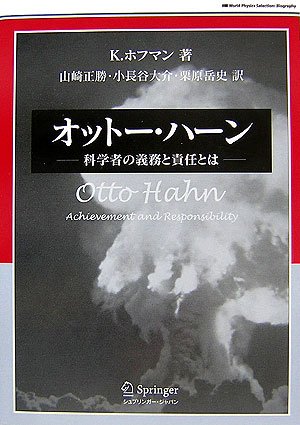- 著者
- 栗原 岳史
- 出版者
- 東京工業大学大学院社会理工学研究科経営工学専攻技術構造分析講座
- 雑誌
- 技術文化論叢 (ISSN:13476262)
- 巻号頁・発行日
- no.12, pp.31-55, 2009
5 0 0 0 OA ビキニ被災情報の国際的伝達と各国の原子力開発への影響
1954年3月の米国のビキニ水爆実験によって、第五福竜丸の乗組員が放射線被害を被った。その実態は、自らも調査に関わった当時大阪市立医科大学助教授だった西脇安によって各国に伝えられた。本研究では、遺族から提供された資料などの分析で、次のことが明らかにされた。(1)1954年の西脇の欧州訪問は、大阪の原水爆禁止運動が財政的に支えたこと。(2)訪欧中のジョセフ・ロートブラットとの出会いが、1955年の「ラッセル・アインシュタイン宣言」の重要なきっかけを与えたこと。(3)1957年のソ連及び東欧訪問でその影響が広がったこと。(4)1959年の訪米によってライナス・ポーリングの反核運動を支えたこと。
5 0 0 0 米国から日本への原子力技術導入に関する歴史研究
本年度は,昨年度に引き続き,1950-60年代の科学者たちについて米国政府がどのように理解していたのかを解明するために,主として米国国立公文書館の所蔵する文書史料の調査を行ってきた.これまでに,科学研究活動全体が米外交政策の重要な手段の一つとしての役割を果たしていたことを,かなり具体的に明かにすることができた.昨年度までに原子力技術の日本への導入に関する米外交政策を中心に調査を進めてきたが,米の外交政策は科学全体に及んでおり,原子力技術の日本への導入はその一部にすぎず,科学に関する米外交政策全体の中で,原子力技術がどのような位置づけられていたのかを明らかにする必要があることが明らかになってきた.第二次世界大戦の終結から1950年までに,米国務省は外交政策における科学の重要性を自覚するようになり,科学に関する外交政策を体系的にまとめた報告書を作成し,その報告書の勧告に従って,国務長官の下に科学局を新設し,主要国に科学者を科学アタッシェとして派遣するようになった.日本への原子力技術の導入はこの枠組みの中で行われたものであった.米外交政策の目的は,主要国と共同で科学研究を進めることで国家安全保障にとって重要な科学知識を得ることや,科学の振興によって経済発展をもたらして政治を安定させることで,当時の冷戦体制の中で対立していた共産主義勢力の浸透を防ぐということにあった.そのため,米に批判的な科学者たちの動向を注意深く観察していたことを示す公文書史料をいくつか発見しすることができた.これらの調査成果の一部を,2017年6月4日に香川県の香川大学で開催された日本科学史学会などで発表し,幾人かの研究者たちから助言をいただくことができた.
- 著者
- 栗原 岳史
- 出版者
- 日本科学史学会
- 雑誌
- 科学史研究 (ISSN:21887535)
- 巻号頁・発行日
- vol.42, no.227, pp.140-148, 2003 (Released:2021-08-12)
The National Science Foundation (NSF) was established in 1950 after a long debate between Harley M. Kilgore and Vannevar Bush. There is no military research division at the present NSF, but at the time both Bush and Kilgore intended to include it into the NSF. The author maintains that scientists' movement by the Federation of American Scientists (FAS) was the most important factor that the military research division was deleted from the NSF. The FAS insisted that the military should not control the Atomic Energy Commission. The FAS also thought that the military should not control scientific research activities in general. The FAS emphasized that scientific knowledge should be used for peace purposes, and considered the NSF as an alternative of military patronage. The military tried to build scientific research systems in close cooperation with Bush. The FAS criticized strongly both the military and Bush. This idea of the FAS was supported by many scientists. The NSF Bill that met requirements of the military and Bush passed the Congress, but President Truman vetoed it. In the process of amendment of the Bill, the military and Bush reluctantly accepted FAS's requirement to delete military research division from the NSF.
- 著者
- 栗原 岳史
- 出版者
- 日本科学史学会
- 雑誌
- 科学史研究 (ISSN:21887535)
- 巻号頁・発行日
- vol.50, no.258, pp.65-76, 2011 (Released:2021-07-22)
After the end of the Second World War, the U.S. military services began to support basic research in ivilian institutions. They officially stated that they would transfer their basic research programs to the National Science Foundation (NSF), once it was established. But in fact they did not. This paper has analyzed the institutional processes in which the U.S. military services continued to support basic research after the establishment of the NSF. In July 1946, the US Army and Navy jointly established the Research and Development Board (RDB) to coordinate Their R & D activities. They appointed Vannevar Bush, a famous civilian scientific administrator and the director of the Office of Scientific Research and Development during the war, as Chairman of the RDB. Bush and some military officials attempted to set up a defense research division in the NSF, but they did not succeeded because President Truman vetoed in August 1947 the bill that they had proposed. As a result, the NSF was established without any military research divisions. Following the veto, debates continued among the military officials whether they should continue to support basic research programs in civilian institutions or transfer such support entirely to the NSF. During meetings of the RDB between 1948 and 1951, the decision was made that the military services would continue to support basic research even after the establishment of the NSF.
1 0 0 0 オットー・ハーン : 科学者の義務と責任とは
- 著者
- K.ホフマン著 山崎正勝 小長谷大介 栗原岳史訳
- 出版者
- シュプリンガー・ジャパン
- 巻号頁・発行日
- 2006
本研究は,1950年代初頭から1960年代にかけて,米国政府が日本の学術的な科学研究に対して行っていた研究資金の支援の実態について,公開された米公文書史料を利用した実証的な歴史研究として明らかにすることを目的とする.冷戦期において,米国が科学研究を振興するために日本を含む主要国に対して研究資金の支援を行ってきたことがことが明らかになっているが,本研究は,米政府諸機関,特に国務省と軍関係諸機関等が,日本の科学研究に対して,どのような目的で,どのくらいの規模で研究資金の支援を行っていたのか,それに対して日本側がどのような対応をしていたのかについて,その実態を明らかにするものである.
- 著者
- 栗原 岳史
- 出版者
- 日本科学史学会
- 雑誌
- 科学史研究. 第II期 (ISSN:00227692)
- 巻号頁・発行日
- vol.50, no.258, pp.65-76, 2011-06-24
After the end of the Second World War, the U.S. military services began to support basic research in ivilian institutions. They officially stated that they would transfer their basic research programs to the National Science Foundation (NSF), once it was established. But in fact they did not. This paper has analyzed the institutional processes in which the U.S. military services continued to support basic research after the establishment of the NSF. In July 1946, the US Army and Navy jointly established the Research and Development Board (RDB) to coordinate Their R & D activities. They appointed Vannevar Bush, a famous civilian scientific administrator and the director of the Office of Scientific Research and Development during the war, as Chairman of the RDB. Bush and some military officials attempted to set up a defense research division in the NSF, but they did not succeeded because President Truman vetoed in August 1947 the bill that they had proposed. As a result, the NSF was established without any military research divisions. Following the veto, debates continued among the military officials whether they should continue to support basic research programs in civilian institutions or transfer such support entirely to the NSF. During meetings of the RDB between 1948 and 1951, the decision was made that the military services would continue to support basic research even after the establishment of the NSF.
